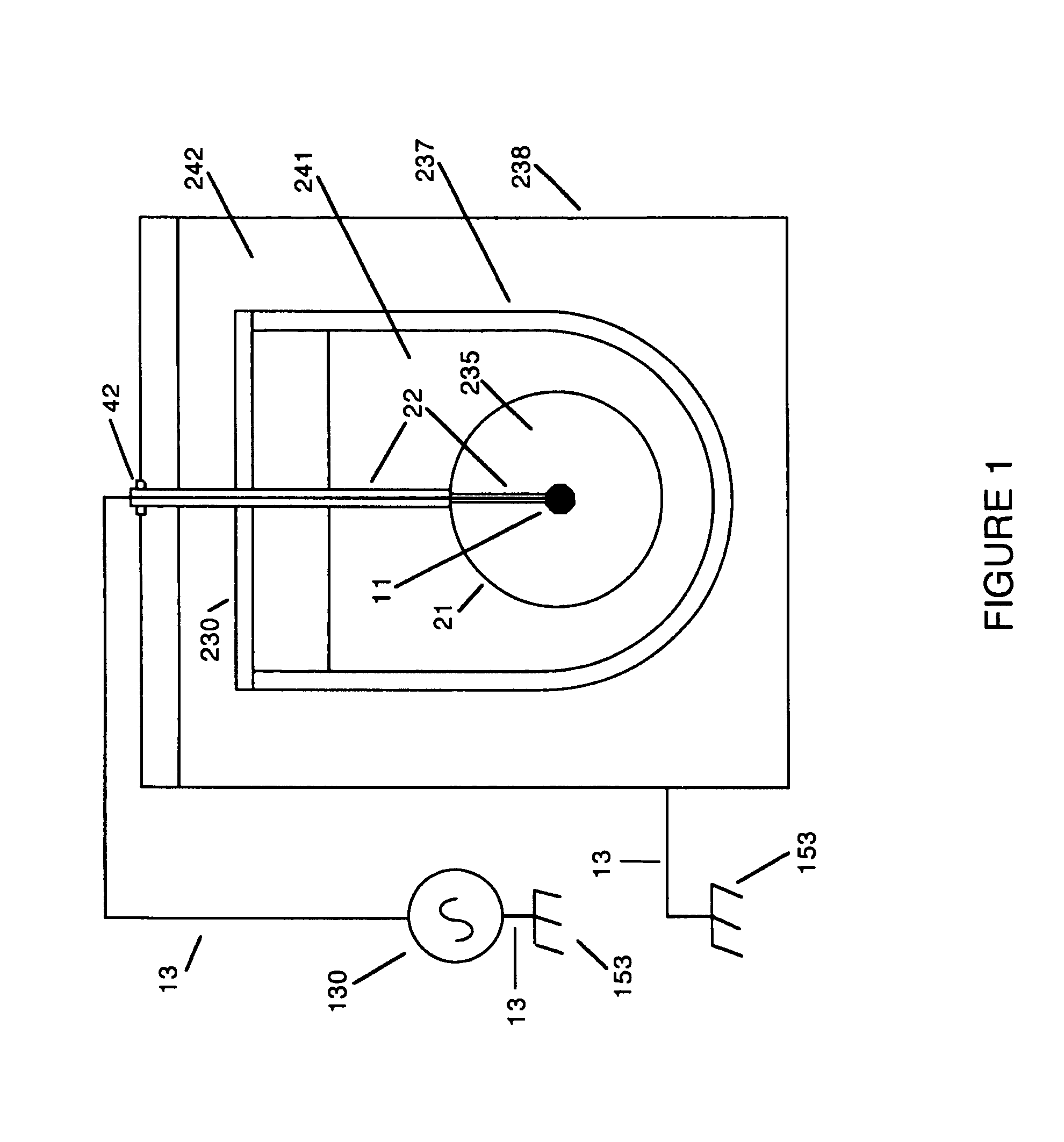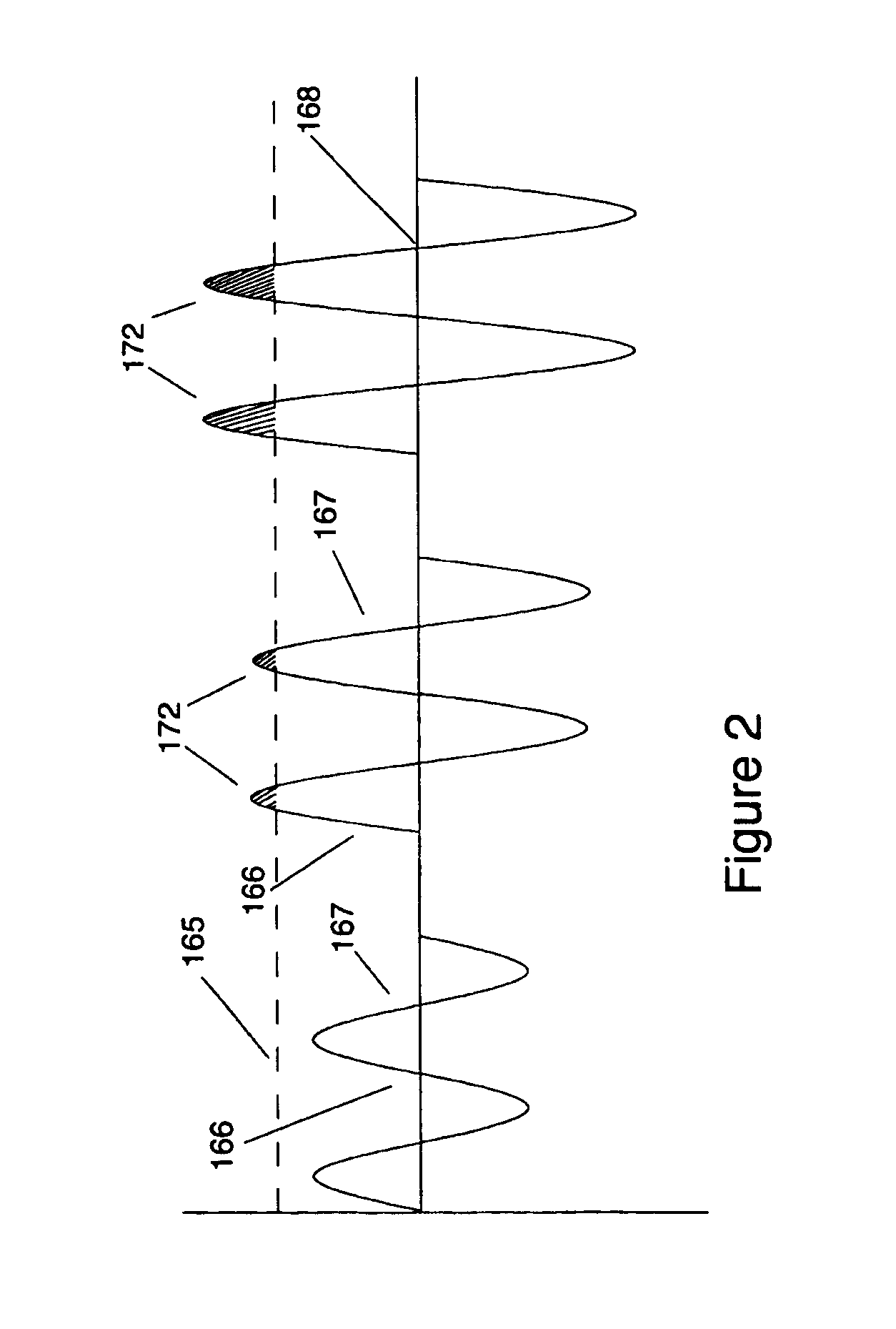Apparatus for hot fusion of fusion-reactive gases
a technology of fusion-reactive gases and apparatus, which is applied in the direction of nuclear reactors, nuclear engineering, greenhouse gas reduction, etc., can solve the problems of inherently inefficient operation, and inability to achieve the effect of high temperature and momentarily high pressur
- Summary
- Abstract
- Description
- Claims
- Application Information
AI Technical Summary
Benefits of technology
Problems solved by technology
Method used
Image
Examples
Embodiment Construction
[0025]FIG. 1 shows a non conducting spherical reactor envelope 21 having an internal insulated stalk 22 extending centrally from which a spherical target electrode 11 is located centrally, coaxially, and fixedly within envelope 21. An open space is defined between spherical electrode 11 and the inner surface of spherical envelope 21. This defined space contains rarefied Deuterium gas 235. This gas 235 may also consist of Tritium, or mixture of Deuterium and Tritium, or any other fusion reactive gases. This space also provides a location for the generation of an alternating electric field.
[0026]This alternating electric field provides for the ionization of gases contained therein. It also provides for the alternately radial inward acceleration and the alternately radial outward acceleration of ionized gases contained therein. The collapsing of ionized gases provides for ions impacting the spherical target, for the impact of ions with one another, and for such impacts to occur at fusi...
PUM
 Login to View More
Login to View More Abstract
Description
Claims
Application Information
 Login to View More
Login to View More - R&D
- Intellectual Property
- Life Sciences
- Materials
- Tech Scout
- Unparalleled Data Quality
- Higher Quality Content
- 60% Fewer Hallucinations
Browse by: Latest US Patents, China's latest patents, Technical Efficacy Thesaurus, Application Domain, Technology Topic, Popular Technical Reports.
© 2025 PatSnap. All rights reserved.Legal|Privacy policy|Modern Slavery Act Transparency Statement|Sitemap|About US| Contact US: help@patsnap.com



